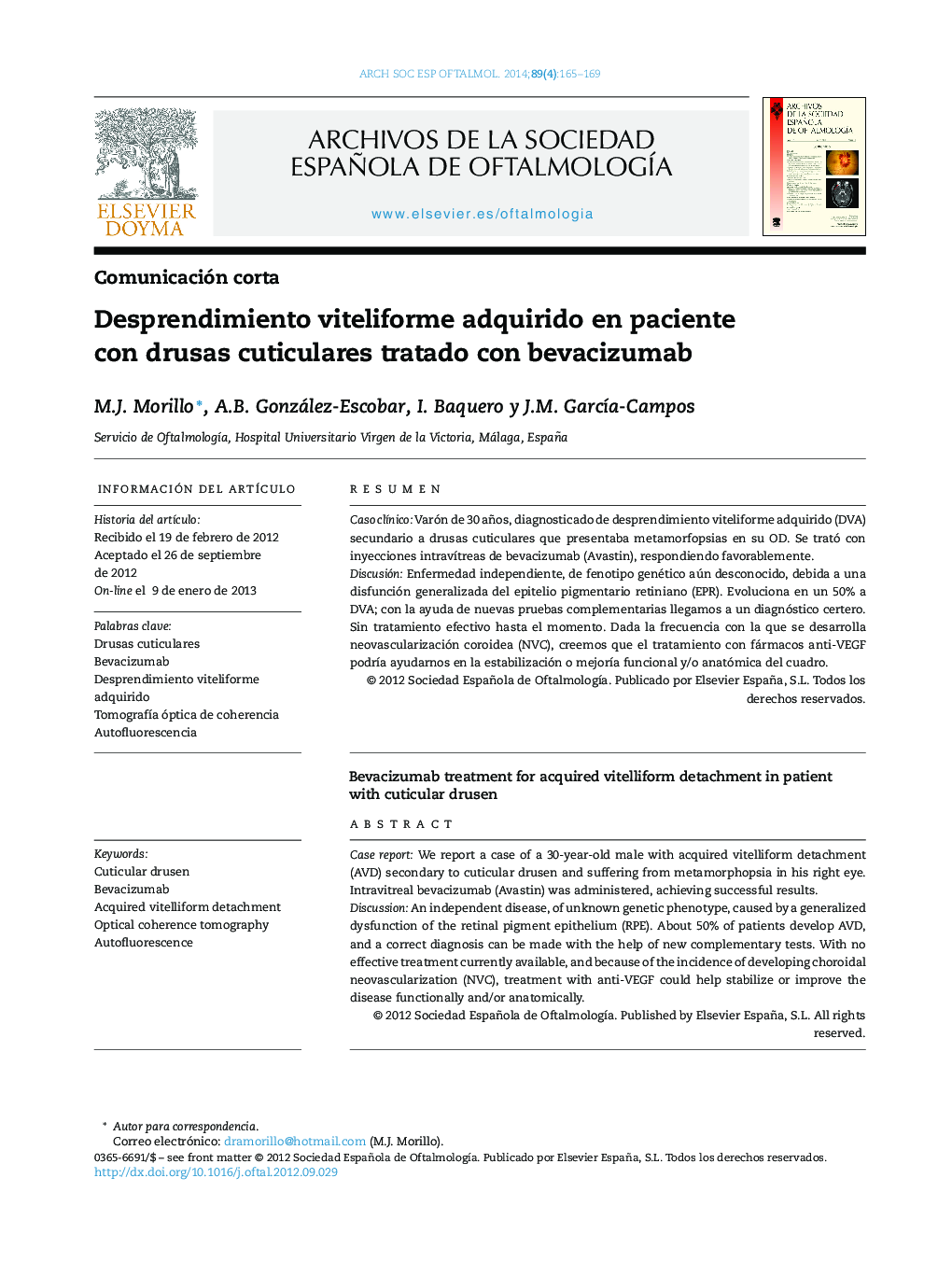| Article ID | Journal | Published Year | Pages | File Type |
|---|---|---|---|---|
| 4007137 | Archivos de la Sociedad Española de Oftalmología | 2014 | 5 Pages |
ResumenCaso clínicoVarón de 30 años, diagnosticado de desprendimiento viteliforme adquirido (DVA) secundario a drusas cuticulares que presentaba metamorfopsias en su OD. Se trató con inyecciones intravítreas de bevacizumab (Avastin), respondiendo favorablemente.DiscusiónEnfermedad independiente, de fenotipo genético aún desconocido, debida a una disfunción generalizada del epitelio pigmentario retiniano (EPR). Evoluciona en un 50% a DVA; con la ayuda de nuevas pruebas complementarias llegamos a un diagnóstico certero. Sin tratamiento efectivo hasta el momento. Dada la frecuencia con la que se desarrolla neovascularización coroidea (NVC), creemos que el tratamiento con fármacos anti-VEGF podría ayudarnos en la estabilización o mejoría funcional y/o anatómica del cuadro.
Case reportWe report a case of a 30-year-old male with acquired vitelliform detachment (AVD) secondary to cuticular drusen and suffering from metamorphopsia in his right eye. Intravitreal bevacizumab (Avastin) was administered, achieving successful results.DiscussionAn independent disease, of unknown genetic phenotype, caused by a generalized dysfunction of the retinal pigment epithelium (RPE). About 50% of patients develop AVD, and a correct diagnosis can be made with the help of new complementary tests. With no effective treatment currently available, and because of the incidence of developing choroidal neovascularization (NVC), treatment with anti-VEGF could help stabilize or improve the disease functionally and/or anatomically.
